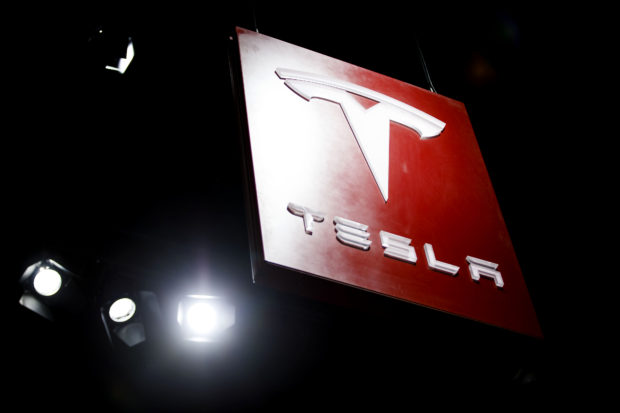Tesla Inc. shares plunged below $200 for the first time in more than two years on concerns the carmaker faces a “Kilimanjaro-like uphill climb” to hit profitability goals in the second half of the year.
In a note Sunday, Wedbush analyst Dan Ives described the electric-car maker’s predicament as a “code-red situation” and cut his price target on the stock to $230 from $275. Ives slashed his target from $365 just last month.
Ives, who was once among the most bullish analysts covering Tesla, said in his note he has “major concerns around the trajectory of Tesla’s growth prospects and underlying demand on Model 3 in the U.S. over the coming quarters.”

Photographer: David Paul Morris/Bloomberg
Tesla shares fell as much as 7.5% to $195.25 and were trading at $200.18 as of 9:55 a.m. Monday in New York. The stock closed at the lowest level in almost 2 1/2 years on Friday after Musk called for a ” hardcore” review of all the company’s expenses and an analyst warned of potentially severe fallout from a fatal crash involving Autopilot.
Tesla delivered just 63,000 cars in the first quarter but expects to deliver 90,000 to 100,000 cars in the second quarter, and 360,000 to 400,000 for the year. Ives said hitting the full-year target is going to be a “Herculean task” and sees 340,000 to 355,000 as a more likely scenario.
Representatives for Tesla didn’t immediately respond to requests for comment.
Tesla’s 5.3% bonds due 2025 now yield a record 8.8% percent, according to Trace. That’s well above the average yield for a B-rated company and have trailed the broader Bloomberg Barclays Single B U.S. High Yield Index this year by around 500 basis points, according to Bloomberg Intelligence analyst Joel Levington.
“There’s little in the form of favorable credit catalysts to turn momentum around in the near term,” he said in a report Monday. The bond price dropped below 83 cents on the dollar for the first time on an intraday basis, making the security the biggest loser in the high-yield market Monday, according to Trace.
Tesla Chief Executive Officer Elon Musk recently told employees in an email that he and Chief Financial Officer Zachary Kirkhorn will personally scrutinize expenditures following a worse-than-expected first-quarter loss.
When drumming up interest for a stock and debt offering earlier this month, Musk pitched investors on a future of autonomous robotaxis as the key to Tesla becoming a $500 billion company. Its market capitalization is now less than $36 billion.
If Tesla is unable to earn profit in the second half of the year, the company may need to raise another $1 billion to $2 billion of capital, Ives said in an interview with Bloomberg Television.
“With a code red situation at Tesla, Musk & Co. are expanding into insurance, robotaxis, and other sci-fi projects/endeavors when the company instead should be laser-focused on shoring up core demand for Model 3 and simplifying its business model and expense structure,” Ives wrote in his report.
–With assistance from Yan Zhang, Gabrielle Coppola, Jonathan Ferro and Molly Smith.To contact the reporter on this story: Dana Hull in San Francisco at dhull12@bloomberg.net To contact the editors responsible for this story: Craig Trudell at ctrudell1@bloomberg.net ;Young-Sam Cho at ycho2@bloomberg.net Angus Whitley





















 A Practical Blueprint: The Five Plays of an Innovation Culture
A Practical Blueprint: The Five Plays of an Innovation Culture  Truckers Who Fail English Tests Are Pulled Off Roads in Crackdown
Truckers Who Fail English Tests Are Pulled Off Roads in Crackdown  Berkshire Hathaway Announces Leadership Appointments: New CEO at GEICO
Berkshire Hathaway Announces Leadership Appointments: New CEO at GEICO  Executives on the Move at HSB, American Modern Insurance Group, AIG
Executives on the Move at HSB, American Modern Insurance Group, AIG 




